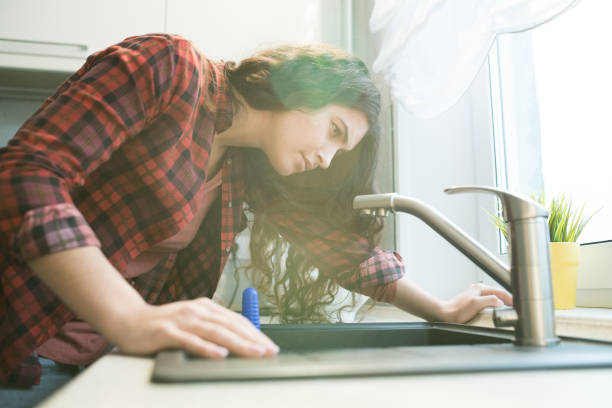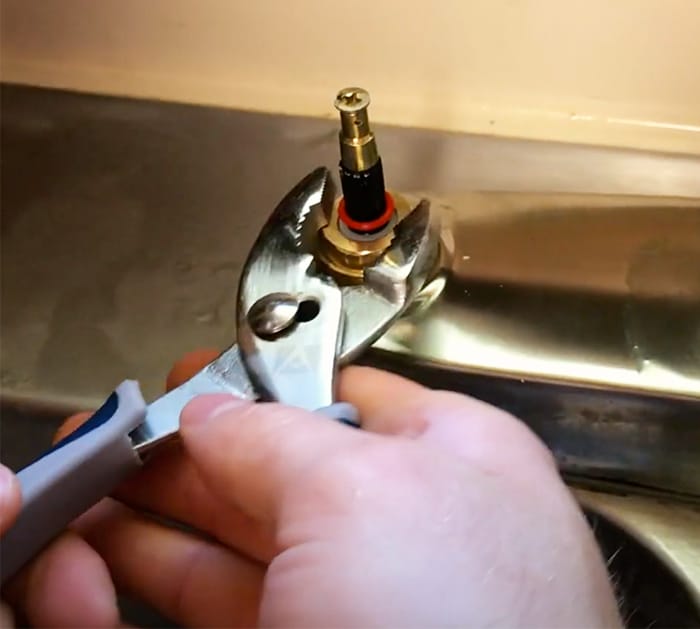Which It's Critical to Fix a Leaking Faucet
Which It's Critical to Fix a Leaking Faucet
Blog Article
Have you been in search of help and advice around Why It's Important to Fix Leaky Faucets?

Trickling faucets could look like a small inconvenience, however their influence exceeds just the aggravation of the sound. From drainage to sustaining unnecessary monetary expenses and health risks, neglecting a trickling tap can lead to different repercussions. In this write-up, we'll delve into why it's critical to address this common household issue quickly and efficiently.
Waste of Water
Environmental Impact
Dripping faucets add substantially to water wastage. According to the Epa (EPA), a single tap dripping at one drip per second can throw away more than 3,000 gallons of water per year. This not just stress water sources yet also affects ecological communities and wildlife dependent on them.
Step-by-Step Overview to Fixing a Dripping Faucet
Tools Required
Before attempting to fix a dripping faucet, gather the necessary tools, including a flexible wrench, screwdrivers, substitute parts (such as washing machines or cartridges), and plumber's tape.
Usual Tap Issues and Their Solutions
Determine the kind of faucet and the details concern triggering the drip. Common troubles consist of worn-out washers, corroded shutoff seats, or malfunctioning O-rings. Refer to supplier directions or online tutorials for detailed assistance on repairs.
Financial Expenses
Increased Water Costs
Beyond the ecological effect, trickling faucets can pump up water bills significantly. The accumulated waste with time translates into greater energy expenses, which can have been avoided with timely repair services.
Possible Building Damages
Moreover, extended leaking can bring about harm to components and surface areas surrounding the tap. Water buildup can trigger staining, corrosion, and even structural issues if left unattended, resulting in added fixing prices.
Health and wellness Worries
Mold and Mold Development
The continuous existence of moisture from a trickling tap creates a perfect environment for mold and mildew and mildew development. These fungi not just endanger indoor air quality however additionally pose health and wellness risks, particularly for people with breathing conditions or allergic reactions.
Waterborne Diseases
Stationary water in leaking taps can become a breeding ground for germs and other microorganisms, raising the danger of waterborne diseases. Impurities such as Legionella bacteria grow in stationary water, potentially causing major health problems when ingested or inhaled.
Do it yourself vs. Specialist Repair
Advantages and disadvantages of DIY Repair
While some might attempt to deal with a leaking tap themselves, DIY repairs feature their own set of challenges. Without proper understanding and tools, DIY efforts can intensify the concern or lead to incomplete fixings, prolonging the issue.
Advantages of Working With a Professional Plumber
Employing a specialist plumber ensures that the underlying reason for the trickling tap is dealt with efficiently. Plumbing professionals have the proficiency and equipment to diagnose and repair faucet issues efficiently, conserving time and decreasing the threat of more damages.
Environmental Duty
Private Contribution to Conservation
Taking responsibility for dealing with trickling faucets aligns with more comprehensive initiatives toward water preservation and ecological sustainability. Every individual's activities collectively make a considerable impact on maintaining valuable sources.
Lasting Living Practices
By prioritizing timely repairs and taking on water-saving practices, people contribute to lasting living practices that benefit both existing and future generations.
Safety nets
Routine Upkeep Tips
To prevent dripping faucets, execute routine upkeep such as cleansing aerators, examining for leakages, and replacing damaged parts without delay. Furthermore, take into consideration setting up water-saving tools or upgrading to a lot more reliable fixtures.
Relevance of Prompt Repair Works
Resolving dripping faucets as soon as they're observed protects against further water wastage and prospective damages, eventually conserving both water and cash in the future.
Influence On Residential Or Commercial Property Value
Perception of Well-Maintained Home
Preserving a building in good condition, consisting of attending to maintenance issues like dripping taps, improves its perceived worth and charm among potential purchasers or tenants.
Impact on Resale Value
Characteristics with well-maintained plumbing components, including taps, command higher resale worths in the real estate market. Attending to dripping taps can add to a positive impact during home inspections and settlements.
Verdict
Addressing a leaking tap surpasses mere benefit; it's a crucial step toward conserving water, minimizing economic prices, and safeguarding health and property. Whether through DIY repairs or professional support, taking action to repair dripping faucets is a tiny yet impactful means to advertise accountable stewardship of resources and contribute to a much healthier, a lot more sustainable future.
Why Are My Faucets Dripping (And Can I Fix it Myself)?
Causes of a Dripping or Leaking Faucet
Whether you’re hearing drops of water falling and hitting a sink, or noticing water ooze out from the base of the spout, you shouldn’t ignore a dripping or leaking faucet. And, the good news is, sometimes you can fix the problem yourself.
In this article, we’ll review a few common causes of dripping and leaky. We’ll also walk you through some basic ways to find the problem and handle it without calling anyone — and let you know when to call in a pro.
But, no matter what the cause, or whether you can handle it on your own, the sooner you address it, the better.
Each drip may be a tiny amount of water. But, they all add up quickly. According to the U.S. Geological Survey, one faucet losing one drop every 20 seconds — five a minute — wastes around a liter of water every day, and 173 gallons a year.
Add in more than one in your house, and it’s a lot of water to waste. So, we’ll help you get to the bottom of things quickly.
Four Reasons Your Faucet May Be Dripping
Aerator is Damaged or Unseated Valve Seat is Corroded O Ring is Loose or Worn Out Part of the Assembly is Loose Aerator is Damaged or Unseated
If you unscrew the end of your faucet, you’ll find the aerator. It’s the little stem piece with a screen on it that shuts off the water circulation.
If it’s damaged, or if it’s not sitting right, it will allow water to pass through.
Valve Seat is Corroded
Next is the valve seat, which is connected to the washer. If the washer wasn’t in place correctly, then it could have ground against the seat. Over time, this damages the valve seat.
The problem could also be corrosion: Over time, the part has worn out, and it’s now allowing water to pass through.
O Ring is Loose or Worn Out
Since the o ring is only a small rubber gasket, it’s a common reason why the faucet is dripping. You’ll find it at the base of the faucet, and it’s there to keep water from coming out where it’s not supposed to.
However, it’s common for the o ring to wear out over time. When it does, you’ll notice a drip.
Part of the Assembly is Loose
So far, we’ve looked at a few small, specific parts. But, the problem could be anywhere in the assembly if something’s out of place.
Even if a part isn’t damaged, over time, it may have become loose or dislodged. It could be the parts we mentioned, or the aerator at the tip of the faucet, the stem itself,
Can I Fix a Leaky Faucet Myself?
Depending on the problem, and how handy you are, there’s a chance you can fix a leaky faucet without calling a professional. But, you do run the risk of making the problem worse.
If it’s a small drip, you can certainly try a few troubleshooting tactics. We’ll walk you through them in a moment.
But, no matter what, your first step should be shutting off the water coming into the faucet. You should find a shutoff valve under the sink on the pipes leading to it. Turn each one clockwise until they close tightly.
Next, make sure you have the right tools for whatever you’re attempting. It’s tempting to make do with what you have. But, you need the right ones for a reason: You’re often dealing with small parts that can break if you handle them carelessly.
If you’re feeling confident, here are some places to start.
Items Near the Tip of the Faucet
A few of the parts we mentioned — particularly the valve seat and washer — are located at the tip of the faucet where the water comes out. They’re easy to access, making it a good place to start.
Check the O Ring
To check the o ring, you’ll need to take off the spout at the base. It’s easiest on kitchen sinks with long spouts, versus the smaller, bulkier base on most bathroom sinks.
Either way, this can be tricky, so do it carefully and don’t force anything. If it’s not coming right off, you’re much better off calling in a pro than possibly breaking something.
For a kitchen sink, there’s usually a nut or coupling assembly at the base of the spout. These often slide off easily without using any tools.
Once you’ve disassembled those parts, gently but forcefully twist off the spout.
Then, you can see the o rings. There should be two of the rubber gaskets on the base. If they look worn or damaged, replace them, and see if that solves the problem.

Do you really like reading about Why Is It Important To Fix Your Leaking Tap/Faucet?? Try to leave a short review down below. We would be pleased to see your thoughts about this posting. In hopes to see you back again in the future. Liked our blog entry? Please quickly share it. Let somebody else discover it. I truly appreciate your readership.
Report this page